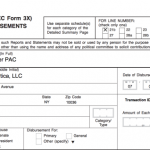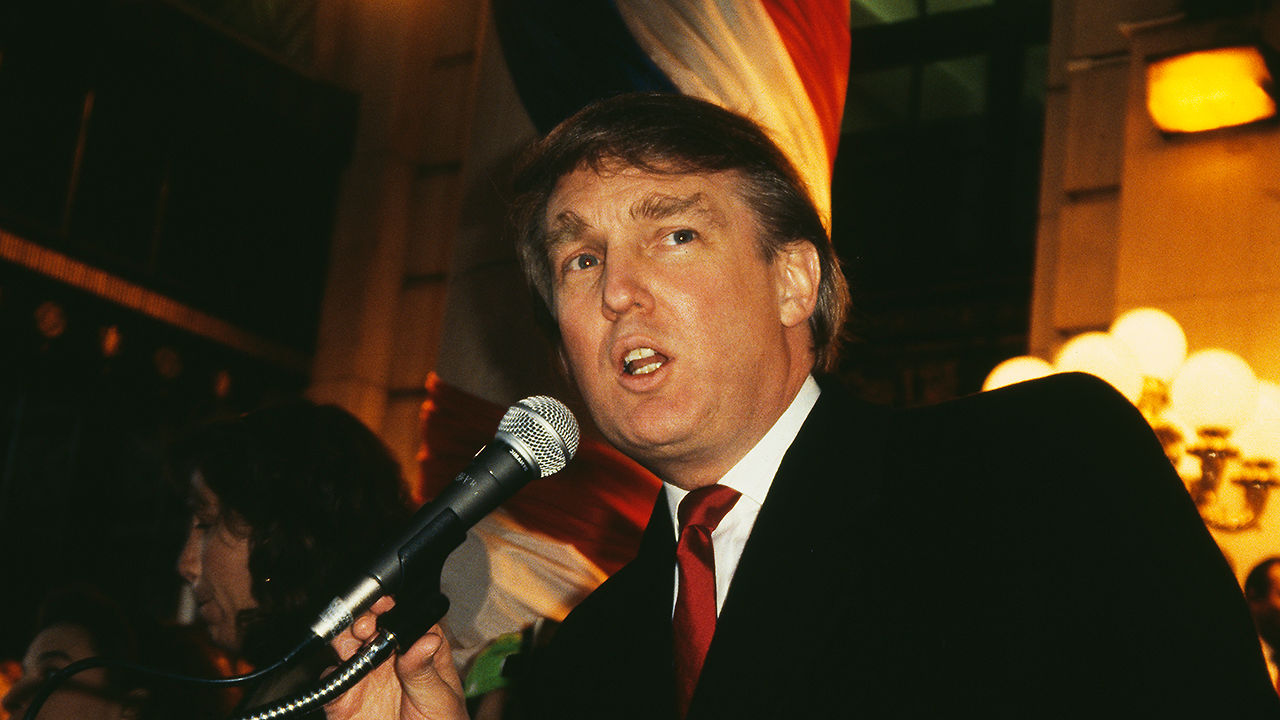The Inside Story Of Donald Trump’s Only High-Tech Venture
A federal appeals court judge held a hearing in D.C. to criticize independent counsel Kenneth Starr for news leaks about his investigation into President Bill Clinton’s affair with Monica Lewinsky. Saving Private Ryan dominated the box office and Brandy and Monica’s “The Boy Is Mine” sat at the top of the charts. And First Lady Hillary Rodham Clinton spoke before the nation’s largest Latino civil rights group, urging Latinos to get high-tech skills because “the 21st century will be ruthless.”
And on July 21, 1998, Donald Trump was launching his first high-tech venture, Trump New Media. The new company’s goal was to wire his luxury Trump Tower development with high-speed Internet access and video-on-demand service. Users just had to hook up a TV set-top box to connect to the services for a monthly charge of $29.95. Eventually, Trump hoped to expand the services to all of the 20,000 residential apartments in his buildings and his hotels, then to apartment towers across the city and beyond.
“It was ahead of its time, an early version of Netflix,” remembers Garth Justin Symonds, who worked as a lawyer for Trump’s partner on the project, FreelinQ Communications.
And it was a real leap into the future for the brash developer, who had made his fortune in real estate, hotels, and casinos. When asked about his knowledge of the Internet, Trump admitted: “I’ll tell you what I know about it: Absolutely nothing.”
But one thing he did know: The Internet could make him money. “But I like what I see with the folks we’re doing business with. I’m more interested in supplying the people in my buildings with great products.”
It was already a crowded marketplace—Bell Atlantic was about to launch a similar high-speed Internet access service, InfoSpeed, though it was more expensive than Trump New Media’s plan. And Time Warner, Spring, and AT&T were all planning to launch their own services.
Typically cocksure, Trump wasn’t worried about the competition: “I have a lot of friends who own buildings and property in Manhattan and obviously those people would do what I ask them to do,” he told the New York Daily News.
The genesis of Trump New Media came when Trump was approached by a young startup called FreelinQ, which was billed at the time as “the nation’s first free advertiser-supported video-on-demand service,” which offered to initially hook up all the residents of Trump Tower for free. “After a thorough review of the technology, we asked ourselves, ‘Why stop there?’” F. Harry Geruldsen, then-vice president in charge of purchasing for the Trump Organization, told Government Technology magazine at the time. Soon, he and Trump teamed up with FreelinQ on Trump New Media.
FreelinQ was using Digital Subscriber Line (DSL) technology to stream digital data over standard copper telephone lines, at downstream transfer rates of 1.5 to 9Mbps. And it required a special DSL modem and network computer “cleverly disguised as a set-top box” similar to a cable box, reported Government Technology. Because the box contained a built-in web browser, customers could even browse the Internet on their TVs via an infrared keyboard.
The company also promised to make available a rotating program of 600 hours of classic and recent movies, TV shows, concerts, Broadway shows, and educational and travel programming. And it planned to offer a satellite-delivered TV service with over 100 channels.
The venture didn’t last long—due to the high cost of the equipment, the difficulty of getting quality movies, and low demand. “It was a startup that didn’t get really going,” remembers Symonds. “There was some demand from apartment dwellers but it was too hard to expand.”
“At the time, FreelinQ was one of the cutting-edge interactive TV companies, one of the few trying to figure out the technology,” remembers Joseph Serino, who was services development director at the company in 1998 and 1999. “And the challenge was all about getting interactive programming into the home so we decided to set up in apartment buildings, selling them a server in the basement and then hooking up the resident to the services.”
But it was very much a “bootstrap operation,” recalls Serino. “It was very ‘Let’s see what we can do and how we can make it work.'”
That startup ethos seems very antithetical to Trump’s career at that point, which was focused literally on brick-and-mortar businesses like apartment towers and hotels. But it also marks a transition period, when he began to truly realize the potential of the new Internet-driven fame game. Just a few years later, rather than provide TV service, he was making a fortune by starring on his own show, The Apprentice, by licensing his name to hotel operators around the world and attracting millions of followers on Twitter.
Serino compares the model to Hulu, in that subscribers who had to sit through two commercials got to watch a half-hour show or one-hour show for free. And movies on demand that viewers couldn’t normally get through HBO, Showtime, or other cable channels.
But problems quickly developed—”the system got up in Trump Tower and it was clunky and it wasn’t working,” says Serino, adding that some residents weren’t happy about shelling out a few hundred dollars for the set-top box. And FreelinQ was having trouble getting quality content from the movie studios, who were charging a premium, which left them with “second and third-tier movies like Dracula and the original Frankenstein.”
Soon, Trump pulled out of the partnership. “It got to the point where if they’re going to put their name on it, it has to work. And this just didn’t work,” says Serino.
It wasn’t a loss for Trump since he didn’t invest “a nickel” in the project, says Serino. “He saw an opportunity and it was a way to give himself publicity and in the news. If it was successful, he would have put some money into the venture and it would have gone into his hotels.” Geruldsen was not available for comment and a spokesperson for Trump didn’t return a request for comment.
Fast Company , Read Full Story
(21)














